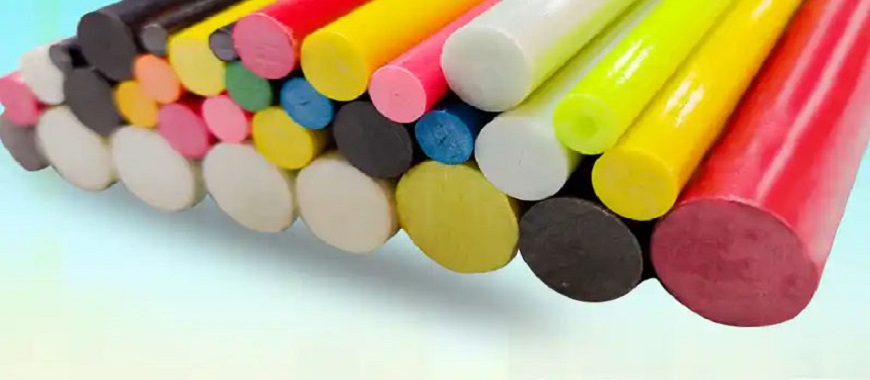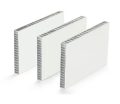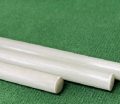
Different types of glass fiberglass rod are designed to cater to various fishing styles and preferences. Fiberglass fly rods, a popular category, are known for their durability, flexibility, and smooth casting performance. These rods excel in situations requiring delicate presentations and precise control, such as fly fishing in smaller streams or close-quarters environments. Anglers often prefer fiberglass rods for their ability to handle larger fish while providing a forgiving action that reduces the risk of line breakage. The distinct characteristics of different types of glass fiberglass rod, including their ability to absorb shocks and maintain strength under pressure, make them a reliable choice for both seasoned anglers and beginners looking to improve their skills.
Different Types of Glass Fiberglass Rod for Modern Applications
Exploring the different types of glass fiberglass rod offers insight into their diverse applications and benefits. These rods, known for their strength, lightweight design, and flexibility, serve as essential components in industries ranging from construction to recreation.
Different types of glass fiberglass rod are categorized based on their composition, performance characteristics, and intended uses. Whether for fishing rods, structural reinforcements, or telecommunications equipment, each type is tailored to meet specific project requirements, ensuring durability and efficiency in even the most challenging conditions.
E Glass Fiberglass Rod for Versatile Applications
E glass fiberglass rod is widely recognized for its excellent strength-to-weight ratio and resistance to environmental stressors. This type is particularly well-suited for applications that require durability without added weight.
While fiberglass inshore rods are often crafted from E glass for a balance of flexibility and durability, S glass fiberglass rods offer superior performance for more challenging fishing conditions or specialized uses.
E glass fiberglass rod is a preferred choice for fishing rods due to its flexibility and sensitivity. Anglers appreciate its ability to handle tension without breaking, making it ideal for a wide range of fishing techniques.
In construction, E glass fiberglass rod is used for structural reinforcements. Its non-corrosive properties ensure long-term reliability, even in humid or corrosive environments.
This type also finds use in telecommunications, where its lightweight nature simplifies the installation of antennas and other equipment. The combination of strength and adaptability makes E glass fiberglass rod indispensable in these industries.
How S Glass Fiberglass Rod Offers Superior Performance
S glass fiberglass rod stands out for its enhanced strength and stiffness compared to E glass. Its ability to withstand higher tensile stress makes it an ideal choice for demanding applications.
S glass fiberglass rod is frequently used in aerospace and automotive industries for its exceptional performance under mechanical stress. The material is also a favorite for high-performance fishing rods, where precision and resilience are critical.
The increased cost of S glass fiberglass rod is offset by its superior durability, making it a long-term investment for projects that demand the highest quality.
Advantages of Hollow Fiberglass Rods
Hollow fiberglass rods are a unique subset of the different types of glass fiberglass rod. Their hollow structure reduces weight while maintaining strength, making them an excellent option for lightweight applications.
In fishing, hollow fiberglass rods enhance casting distance and sensitivity, offering a comfortable experience for anglers during long sessions.
Hollow rods are also used in construction for applications requiring lightweight frameworks. Their ability to maintain structural integrity despite their reduced weight is a significant advantage.
The recyclability of hollow fiberglass rods adds to their appeal, aligning with sustainability goals and reducing environmental impact.
Applications of Solid Fiberglass Rods in Heavy-Duty Settings
Solid fiberglass rods are among the strongest variations in the different types of glass fiberglass rod. Their solid structure provides unmatched durability, making them ideal for industrial and marine applications.
In heavy-duty construction, solid fiberglass rods are used as reinforcements in bridges and tunnels. Their resistance to environmental damage ensures they remain reliable over time.
These rods are also employed in marine settings, such as docks and piers, where they must withstand saltwater exposure and high loads.
While heavier than hollow options, solid fiberglass rods offer the highest level of strength and durability, making them a dependable choice for demanding environments.
Why E Glass Fiberglass Rod is a Popular Choice
E glass fiberglass rod remains one of the most widely used materials due to its balance of cost, performance, and versatility. Its ability to adapt to various applications makes it a go-to material for manufacturers and engineers alike.
The affordability of E glass fiberglass rod allows for large-scale use without compromising quality. Its resistance to corrosion and environmental damage ensures longevity in outdoor and industrial settings.
Customization options further enhance its appeal, enabling users to tailor the material to their specific project needs. This adaptability makes E glass fiberglass rod a preferred choice across industries.
Key Features of Fiberglass Fishing Rods
Fiberglass fishing rods are a prime example of how different types of glass fiberglass rod can be optimized for performance. These rods are celebrated for their sensitivity, flexibility, and strength, making them a favorite among anglers.
How Weight Influences Fishing Rod Performance
The weight of a fiberglass fishing rod directly impacts its performance and suitability for different fishing styles. Lightweight rods, such as those made from hollow fiberglass, are ideal for precision casting and extended use.
Heavier options, including solid fiberglass rods, provide the strength needed for catching larger fish in challenging conditions. Anglers often choose based on the type of fishing they plan to do and the species they aim to catch.
Benefits of Choosing the Right Fiberglass Rod
- Sensitivity allows anglers to detect subtle bites, improving their chances of success.
- Flexibility ensures smooth casting, reducing the strain on the angler’s arm during long sessions.
- Strength enables the rod to withstand the pressure of battling large fish.
- Durability ensures the rod remains reliable over time, even with frequent use.
- Customization allows anglers to select rods tailored to their specific needs, enhancing their fishing experience.
GangLong Fiberglass: Your Source for Different Types of Glass Fiberglass Rod
As a leading provider of fiberglass products, we at GangLong Fiberglass offer a wide range of options tailored to meet your specific needs.
Our collection of different types of glass fiberglass rod includes E glass, S glass, and specialized variations designed for both industrial and recreational use. Each product is crafted to ensure maximum durability, performance, and adaptability.
We pride ourselves on delivering customizable solutions, allowing you to select the dimensions, finishes, and features that best suit your project. Whether for construction, telecommunications, or fishing, our fiberglass rods deliver exceptional value.
By choosing GangLong Fiberglass, you gain access to high-quality materials backed by our commitment to innovation and customer satisfaction. Let us help you achieve your goals with products designed to exceed expectations.
Different Types of Glass Fiberglass Rod for Advanced Applications
Exploring the different types of glass fiberglass rod highlights their role in revolutionizing modern engineering and recreational activities. These materials are versatile, combining durability, flexibility, and strength for diverse applications, including construction, fishing, and telecommunications.
The different types of glass fiberglass rod, such as E glass, S glass, and hybrid variations, cater to specific industry needs. Each type is engineered to balance performance and adaptability, ensuring its suitability for projects requiring long-term reliability and efficiency.
The Role of E Glass Fiberglass Rod
E glass fiberglass rod is among the most widely used types due to its balance of affordability and performance. It is characterized by its excellent strength-to-weight ratio and resistance to corrosion, making it ideal for outdoor and industrial environments.
E glass fiberglass rod is often used in fishing rods, where its flexibility enhances casting accuracy and sensitivity. Its non-corrosive nature ensures longevity, even when exposed to moisture or saltwater.
In construction, E glass fiberglass rod reinforces concrete structures, frameworks, and utility poles. Its durability ensures stability in challenging conditions, such as high humidity or extreme temperatures.
The telecommunications industry relies on E glass fiberglass rod for lightweight antennas and transmission systems. Its adaptability simplifies installation while maintaining high performance.
S Glass Fiberglass Rod for High-Performance Applications
S glass fiberglass rod offers enhanced strength and stiffness compared to E glass, making it a preferred choice for demanding applications. Its ability to withstand higher tensile stress makes it invaluable in aerospace, automotive, and heavy-duty industries.
S glass fiberglass rod is frequently incorporated into fishing rods designed for large game fishing. Its increased strength ensures that the rods can endure high tension during use.
In industrial settings, S glass fiberglass rod is used for mechanical supports and reinforcements. Its durability and resistance to environmental stress make it a reliable material for long-term use.
Although S glass fiberglass rod is more expensive, its superior performance justifies the investment for projects requiring unparalleled durability and strength.
Applications of Different Types of Glass Fiberglass Rod
Different types of glass fiberglass rod serve as critical components across various industries.
In marine environments, these rods are used in dock structures, boat components, and fishing equipment. Their resistance to saltwater and corrosion ensures reliability and longevity.
Construction projects benefit from the lightweight and strong properties of fiberglass rods. They are used for reinforcement in bridges, tunnels, and frameworks, providing stability without adding excessive weight.
In recreational activities, fiberglass rods are central to fishing, camping, and sports equipment. Their flexibility and durability enhance performance, making them a preferred choice for enthusiasts and professionals alike.
The energy sector utilizes fiberglass rods for insulation and mechanical supports. Their non-conductive nature ensures safety and efficiency in electrical installations.
Benefits of Hollow Fiberglass Rods
Hollow fiberglass rods are a specialized type within the different types of glass fiberglass rod. Their design reduces weight while maintaining structural integrity, making them ideal for applications requiring lightweight materials.
Hollow fiberglass rods are commonly used in fishing rods, where they improve casting precision and reduce fatigue during extended use.
In construction, these rods provide lightweight reinforcement for roofs, walls, and other structures. Their ease of handling and installation accelerates project timelines.
Their eco-friendly manufacturing process and recyclability further enhance their appeal, supporting sustainability efforts in various industries.
How to Choose the Right Glass Fiberglass Rod
Selecting the appropriate type of fiberglass rod requires understanding its intended application and performance requirements.
For fishing rods, the choice between E glass and S glass depends on the target species and fishing style. E glass rods are ideal for versatility, while S glass excels in high-stress scenarios.
Construction projects often require rods with high tensile strength and corrosion resistance. Solid fiberglass rods are typically used for heavy-duty reinforcements, while hollow rods are preferred for lightweight applications.
In telecommunications, lightweight and flexible fiberglass rods are essential for ensuring ease of installation and reliable performance. E glass is a common choice due to its affordability and adaptability.
Threaded Rod for Cable Tray: Key Benefits
Benefits of Different Types of Glass Fiberglass Rod
Flexibility Enhances Performance
The flexibility of fiberglass rods allows them to absorb stress without breaking, ensuring consistent performance in dynamic applications such as fishing and telecommunications.
Resistance to Corrosion Ensures Longevity
Fiberglass rods are impervious to moisture and chemical exposure, making them ideal for outdoor and marine environments. This durability reduces maintenance costs and extends their service life.
Lightweight Design Simplifies Handling
The reduced weight of fiberglass rods makes them easy to transport, install, and maneuver, contributing to efficiency in both industrial and recreational settings.
Cost-Effective Over Time
Although some types of fiberglass rods have a higher upfront cost, their long lifespan and minimal maintenance needs make them a cost-effective solution for various applications.
Sustainability Supports Environmental Goals
Fiberglass rods are recyclable and produced using energy-efficient methods, aligning with sustainability initiatives in modern industries.
Fiberglass Cable Fish Rod: Guide to Choosing the Right One
GangLong Fiberglass: Your Partner for Glass Fiberglass Rod Solutions
As a trusted manufacturer, GangLong Fiberglass offers a wide range of fiberglass rod products tailored to meet the specific requirements of diverse industries.
We provide different types of glass fiberglass rod, including E glass, S glass, and hollow variations. Each product is engineered to deliver exceptional performance, durability, and adaptability.
Our customization options allow clients to select the dimensions, finishes, and features that best suit their projects. Whether you need fiberglass rods for construction, telecommunications, or recreational use, we ensure that our products meet the highest quality standards.
Choosing GangLong Fiberglass means partnering with a supplier dedicated to innovation, sustainability, and customer satisfaction. Let us help you achieve your goals with our industry-leading fiberglass rod solutions.
Understanding Fiberglass Rod Tensile Strength in Oilfields
FAQs about Different Types of Glass Fiberglass Rod
Yes, fiberglass is available in different grades, each tailored to specific applications and performance requirements. These grades are generally classified based on their material composition, manufacturing processes, and intended uses.
Electrical Grade (E-glass): The most common and versatile grade, E-glass is used in general-purpose applications due to its excellent mechanical strength and affordability.
Structural Grade (S-glass): A high-performance grade offering superior tensile strength and stiffness, S-glass is used in demanding applications like aerospace and advanced sporting equipment.
Chemical Grade (C-glass): Designed for environments requiring resistance to chemicals, C-glass is used in pipes, tanks, and industrial applications.
Marine Grade Fiberglass: Specially formulated for marine applications, this fiberglass offers enhanced resistance to moisture, saltwater, and UV damage.
High-Temperature Fiberglass: Used in environments with extreme heat, this grade is often found in insulation and industrial equipment.
These different grades ensure that fiberglass can meet a wide range of industry needs, from cost-effective construction materials to high-performance solutions in advanced engineering.
E-glass and S-glass fiberglass differ primarily in their material composition and performance characteristics.
E-glass: Short for electrical glass, E-glass is the standard fiberglass material. It offers excellent strength, flexibility, and affordability, making it suitable for everyday applications like construction, boat building, and fishing rods. However, it has lower tensile strength and stiffness compared to S-glass.
S-glass: Also known as structural glass, S-glass is designed for high-performance applications. It provides superior strength-to-weight ratios, greater stiffness, and enhanced durability under tension. This makes it ideal for aerospace components, high-end sporting goods, and premium fishing rods.
While S-glass is stronger and lighter, it is also more expensive and less impact-resistant than E-glass. The choice between the two depends on the specific requirements of the project, balancing performance needs and budget considerations.
Boat rods are specialized fishing rods designed for use in marine environments, and they come in various types depending on fishing techniques and target species.
Trolling Rods: These are designed for dragging bait or lures behind a moving boat. They are typically strong and heavy-duty to handle large fish like tuna or marlin.
Spinning Rods: These are lightweight and versatile, ideal for inshore fishing or targeting smaller species like snapper or flounder.
Conventional Rods: Used for bottom fishing or jigging, conventional rods are built to withstand the pressure of deep-water fishing.
Stand-Up Rods: These are shorter and sturdier, allowing anglers to fight large fish while standing rather than using a fighting chair.
Fly Rods: While less common in marine settings, fly rods are used in saltwater fly fishing for species like bonefish or tarpon.
Each type of boat rod is designed to meet the specific demands of various fishing techniques, ensuring optimal performance in different marine conditions.

As the editor of GangLong Fiberglass, I have years of experience and in-depth research, focusing on cable tray products, fiberglass solutions, and grille systems. I incorporate years of industry insights and practical experience into every content, committed to promoting the progress of the industry. At GangLong Fiberglass, my commitment is reflected in every product, from innovative cable trays to durable fiberglass solutions and sturdy grille systems. As an authoritative voice in the industry, my goal is to provide valuable information to professionals and businesses and promote forward-looking solutions.


